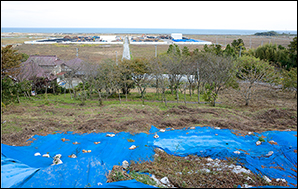Published online by Cambridge University Press: 06 April 2016

The triple disaster that hit eastern Japan on 11 March 2011—earthquake, tsunami and nuclear meltdown—was a momentous event with long-term implications for archaeology and heritage. The sheer scale of the damage experienced generated a form of ‘disaster-led’ preventive archaeology, in line with the reconstruction efforts. As radioactive contamination continues to affect cultural assets including museums and monuments in the exclusion zone, the massive decontamination efforts under way bring about further heritage complications. Alongside its immediate applications, archaeology also has a wider critical role to play: with its mastery of materiality and temporality, it can help envisage the ‘contemporary future’ at Fukushima, a defining landmark of the feats and failures of late modernity.